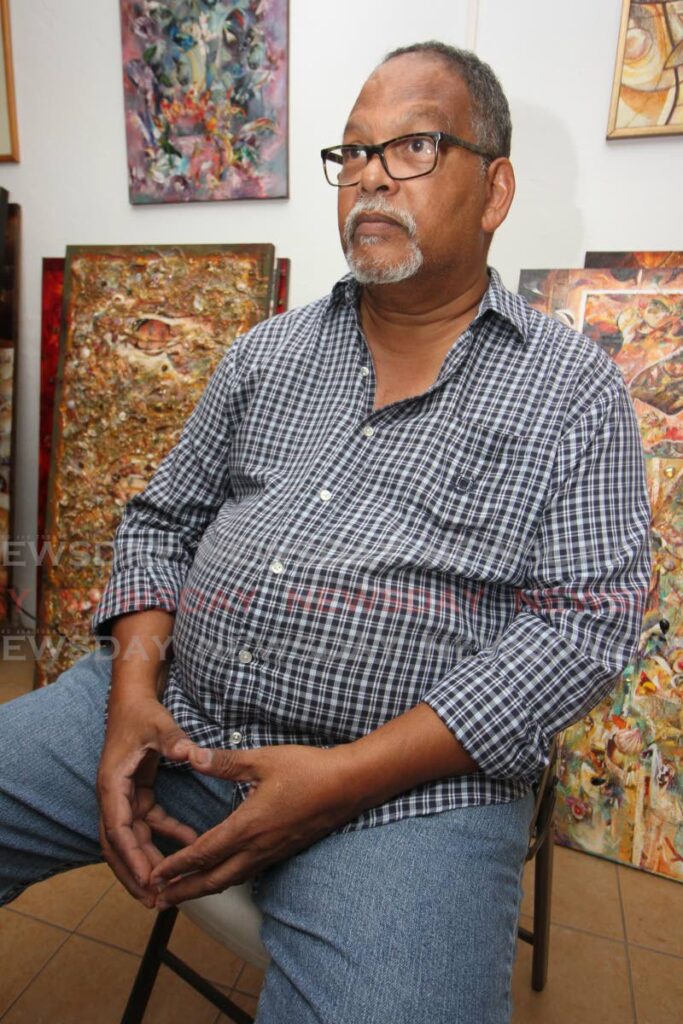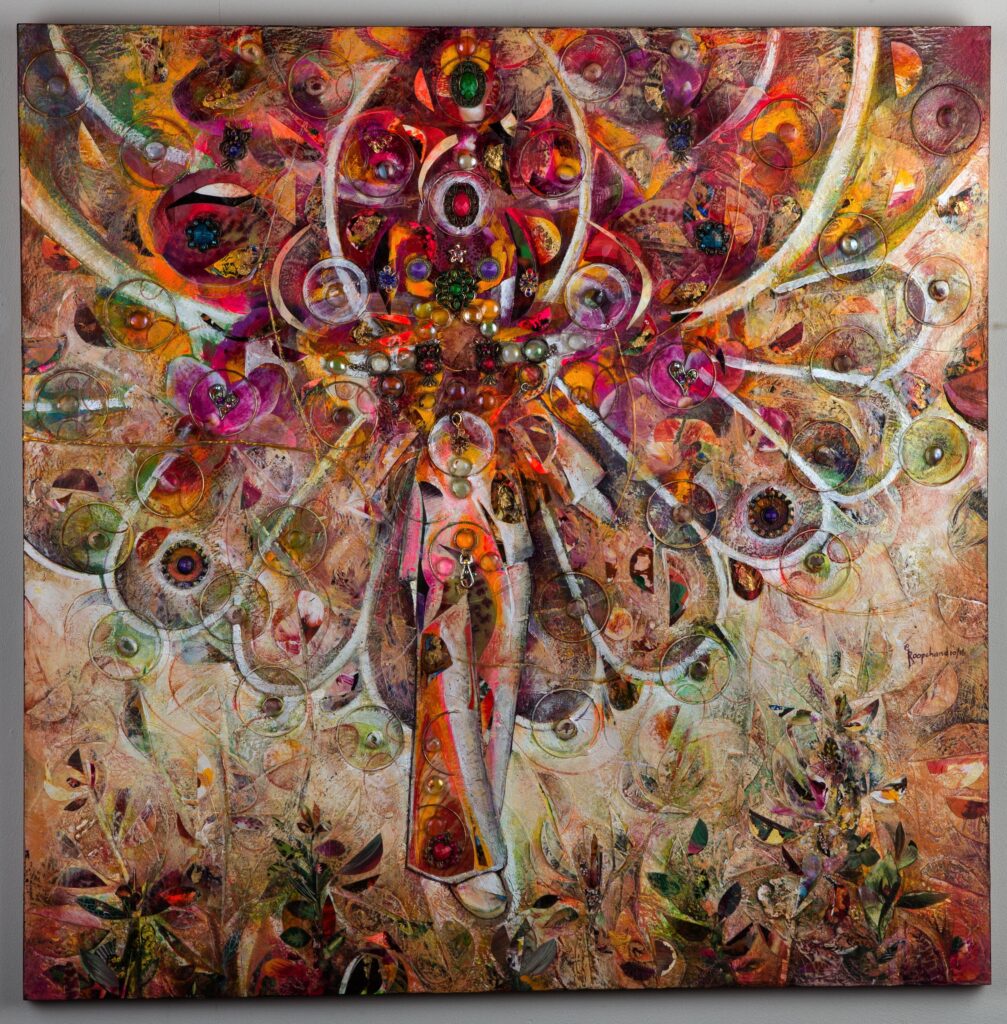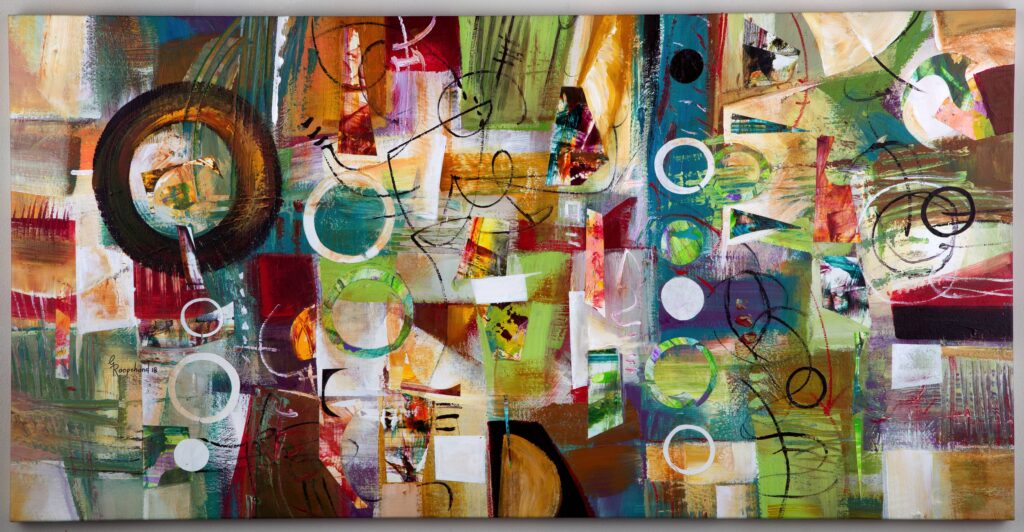Celebrating the late artist Glenn Roopchand

ANDY JACOB
Noted local artist Glenn Roopchand died on July 5. This article acknowledges his invaluable contribution to this country.
A mural painted by Roopchand recreating one of Carlisle Chang's paintings will be installed at the Piarco Airport arrival lounge on August 23.
Apprenticed to the artist Carlisle Chang at 14, Glenn Roopchand fashioned an outstanding career that built on that early training, “transforming Chang into a conduit for Roopchand’s own expressive concerns,” in Pat Bishop's words.
He was a significant presence on the local art scene, exhibiting frequently, inspiring colleagues and younger artists and publishing catalogues of his work that will remain an invaluable resource for generations to come.
He articulated, in many forums, the philosophy that underpins his work: the feminine principle, the concept of soul, the importance of rhythm. Most of all, he espoused that love of country and art as a means to express that love.
His long association with a venerable local art tradition, his restless decorativeness, the use of actual and simulated texture and a commitment to teasing out archetypal forms like the Caribbean Queen, Man with the Hammer and others, were drawn together in his work to create a unique Caribbean vision that is both ornamental and profound.
Roopchand’s long apprenticeship to Chang honed his skills with brush, knife, scissors, glue and colour.
More importantly, this period linked him to a tradition that encompassed both Carnival and “art- for-country” that few of our artists even remember. These were the heady post-Independence years when artists aspired to create a national art style in service first to the Federation and later to the newly independent TT.
These were the days of Chang, Isaiah Boodhoo, MP Alladin, Willi Chen and Sybil Atteck, founder of the Trinidad Art Society. Future Nobel Prize winners Derek Walcott and VS Naipaul were poised for takeoff and the scholar-politician, Eric Williams, was fashioning TT in his own image and likeness.
Roopchand’s direct connection to this tradition would be enough to ensure his importance to the contemporary era. However, his acknowledgement of that tradition’s high seriousness and lofty ambition shines like a beacon at a time when commercial interests and cynicism have caused several of our local artists to fall short of their best work.

Roopchand’s texture bursts out of his canvas with that same energetic randomness that mirrors the human energy and joy of participation that the Carnival permits. Its biological quality is deliberate, indicative of the artist’s stated desire to create a "garden" or "forest" from which his symbolic forms emerge.
His work uses actual and simulated textures that are at the core of Trinidad’s long Carnival tradition. Satin, chiffon, lace and mesh are layered and decorated with rhinestones, sequins, braid and glitter. This creates a richly layered tapestry, a veritable orgy of textural effects.
This nuanced visual texturing appears in the work of many of our landscape painters, where lush vegetation is interwoven with the human presence in sometimes striking and original ways.
Roopchand, as a mixed-race person – a dougla – was acutely aware of the cross-currents that have affected TT over many years. He spoke of the days when he and his mentor, the legendary Chang, had to enter a premier local establishment literally through the back door.
Similar suspicions greeted Chang and Roopchand at the decidedly "black" mas camp of the late George Bailey in the 1960s. In both cases, their creative skills opened doors and forced the acceptance of their place in the local art scene.
Ethnic and class distinctions have, over the years, dictated peculiar developmental paths in the arts. As the society has evolved, official indifference to the role of art and artists has remained, distorting institutions, educational programmes and art itself. Additionally, nonexistent or misguided public commissions, a lack of local visual art publications and a failure to educate public tastes have helped to construct the hostile landscape that Roopchand and his contemporaries were forced to navigate.
One may well ask why Roopchand, who lived in the US and sold paintings and worked as a paid creative artist in that country, chose to deal with everything that makes art in TT so difficult: the lack of infrastructure, the absence of critical discourse, the weakness of art administration.
In my opinion, it is these very difficulties that stimulated Roopchand’s great themes: growth despite constrictions, true beauty from the merely decorative, form from the formless, the quest for Nirvana. Roopchand himself evoked the theme of the constant gardener, “ploughing, probing, enriching and thereby harvesting from that womb of sustenance, that state of Nirvana where the living vibration is interceded within my Caribbean roots.”
Celebrated as a major artist over the past 30 years, Roopchand’s link to tradition, his decorative, high-keyed palette and his textured surfaces, combined with his social concerns, allowed him to create a powerful and unique national statement. This is work that wears its heart on its sleeve and makes no apologies for its patriotic intent. Indeed Roopchand saw his lifework as a way of giving back to his country, which made his development possible.

He spoke of Eric Williams who, in awarding him his national scholarship for art, intoned quietly, “This is for your country.”
The question arises: is Roopchand the end or the beginning? Is he the last of that great tradition of Chang and Clarke, whose commitment to nation-building has left lasting imprints on the national psyche? Or is he the beginning of a much-needed renaissance of our art, where our young artists retool with new (and old) materials, ideas and mythologies to chart a distinctive course in a new globalised environment?
Andy Jacob is an artist and independent curator who has exhibited at 101 Art Gallery and the Art Society. He curated the exhibition for the 50th anniversary of independence that went to Jamaica in 2012, and was assistant curator at the National Museum. He was a friend of Glenn Roopchand’s for over 50 years.

Comments
"Celebrating the late artist Glenn Roopchand"